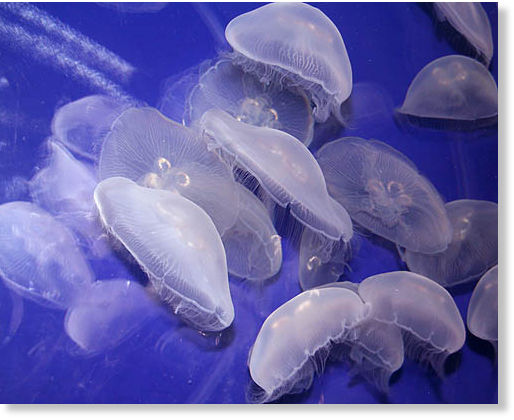
© Unknown
Marine biologists are concerned about the "missing" jellyfish that are washed ashore on Mumbai's beaches during the monsoon.
Experts feel it could be due to lack of strong southwest monsoon winds that blow during this time.
"This is an unusual phenomenon. The number of jellyfish that gets washed ashore annually is high. However, this year, their numbers seem to have depleted," said Dr Vinay Deshmukh, principal scientist with the Central Marine Fisheries Research Institute (CMFRI).
According to the fisherfolk, the arrival of jellyfish on the shores is an indication of the monsoon. "But southwest monsoon winds that start usually from mid-May onwards have not been strong enough this year resulting in the unusual trend," said Dr Deshmukh. According to meteorological data, monitored by the CMFRI, the wind force this year has been between 21 to 27 kmph during May and June. On the other hand, the wind force recorded on July 12 was around 81 kmph.
"This suggests that the wind force that leads to the washing of jellyfish was not strong enough during the start of the monsoon. However, now there has been a change in the wind velocity, we hope that the natural trend continues," said S G Raje, a marine scientist with CMFRI.
Jellyfish are believed to be docile in nature and will not intentionally hurt anyone, say marine biologists. In fact, the long tentacles are meant for catching prey, but if anybody comes in contact with it, jellyfish immediately stick like a parasite, added a scientist.
Many people get "stung" by jellyfish on various beaches like Juhu, Dadar and Malad. "During the monsoon, visitors to the beaches need to be careful. The sting of jellyfish and relative species, like Portuguese Man-o-War, could be serious. If a person comes in contact with the long tentacles, it can leave him writhing in immense pain," said Raje.
Fact file:Jellyfish are found across the world and the creatures are usually found in groups. They are shaped like a bell or an inverted bowl, which ranges up to 2 - 3 inches whereas the tentacles grow even up to a couple of feet.
If a person is stung by jellyfish, domestic vinegar can help to inactivate the stinging cells and traditionally cow dung is used to sooth the pain. Jelly fishes are found across the world and the creatures swarm in groups of thousands. They are shaped like a bell or an inverted bowl, which ranges up to 2 - 3 inches whereas the tentacles grow even up to couple of feet.
Jelly fishes are found across the world and the creatures swarm in groups of thousands. They are shaped like a bell or an inverted bowl, which ranges up to 2 - 3 inches whereas the tentacles grow even up to couple of feet.
If a person is stung by a jelly fish, domestic vinegar can help to inactivate the stinging cells and traditionally cow dung is used to sooth the stings.

With the depletion of fresh water through careless pollution, the tainting of natural foods through genetic modification, the deluge of chemicals sprayed onto our crops, the pollution of air and water through manufacturing and refining, and the overfishing and dumping of toxins in our oceans and lakes is shocking and heartbreaking much of it the result of shortcuts or negligence in the name of increased profits.